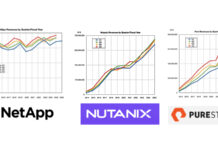The US will block Samsung and SK hynix from using American technology to upgrade or expand their DRAM and 3D NAND production in China, reversing its earlier stance on export exemptions
SK hynix makes DRAM at a fabrication plant in Wuxi, Jiangsu Province, China, and 3D NAND via its subsidiary Solidigm at fabs in Dalian. It also has a DRAM and NAND packaging and test facility at Chongqing. Samsung makes NAND at Xi’an, Shaanxi Province, and has a packaging and test plant at Suzhou, Jiangsu Province. The SK hynix and Samsung fabs use equipment made by US suppliers such as KLA Corp, Lam Research, and Applied Materials. The US Commerce Department has stated that Samsung and SK hynix, currently classed as validated end users, will no longer be permitted to receive such equipment to expand capacity or upgrade their DRAM or NAND production from December 31. They can continue to use their existing equipment.
According to Reuters, SK hynix said it “will maintain close communication with both Korean and the US governments and take necessary measures to minimize the impact on our business.” Samsung did not comment. All of Solidigm’s NAND is made at Dalian, which is believed to account for around a fifth of SK hynix’s total NAND capacity. Approximately 40 percent of its overall DRAM production is made at the Wuxi fab.
The Solidigm NAND uses 192-layer technology, which is no longer leading edge. SK hynix has eighth generation 238-layer and ninth generation 321-layer NAND. The Solidigm plants in China would need to be re-equipped to move up to 200 and 300-plus-layer NAND tech, and the latest US Commerce Department restrictions would prevent that from happening in China. Solidigm may have to set up a new fab or fabs outside China, a venture that could cost $10-20 billion over several years.
Samsung’s Xi’an plant makes 128-layer (sixth generation), 236-layer (eighth generation), and the latest 286-layer (ninth generation) 3D NAND. However, Samsung also makes NAND in South Korea, in Hwaseong and Pyeongtaek, and is developing 400-plus-layer products. Unless granted a new license, Samsung would also have to spend billions of dollars to expand capacity at its existing fabs and/or build new fabs to offset the production shortfall resulting from the China restrictions.
The US first instituted restrictions on exports of its semiconductor technology to China in 2022. Both Samsung and SK hynix, as well as Micron and TSMC, were given exemptions. It is now removing the exemptions for Samsung and SK hynix but not for Micron and TSMC. Micron has US-based fabs and TSMC has plants in Arizona, which are being expanded.
There could be a background element that these restrictions may be part of a broader US effort to encourage domestic fab construction.
Bootnote
The Department of Commerce Revocation of Validated End-User Authorizations in the People’s Republic of China document refers to the Intel Dalian plant as “Intel Semiconductor (Dalian) Ltd.” SK hynix bought Intel’s NAND operation and renamed it Solidigm, with the sale completing earlier this year.








